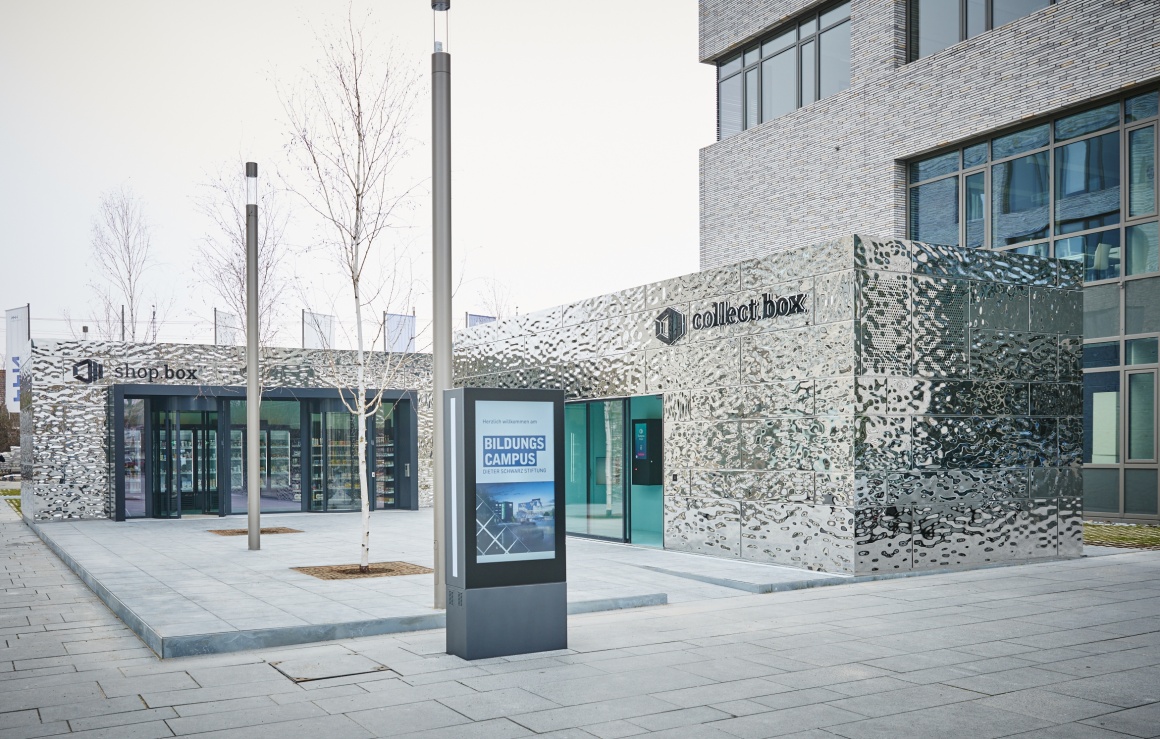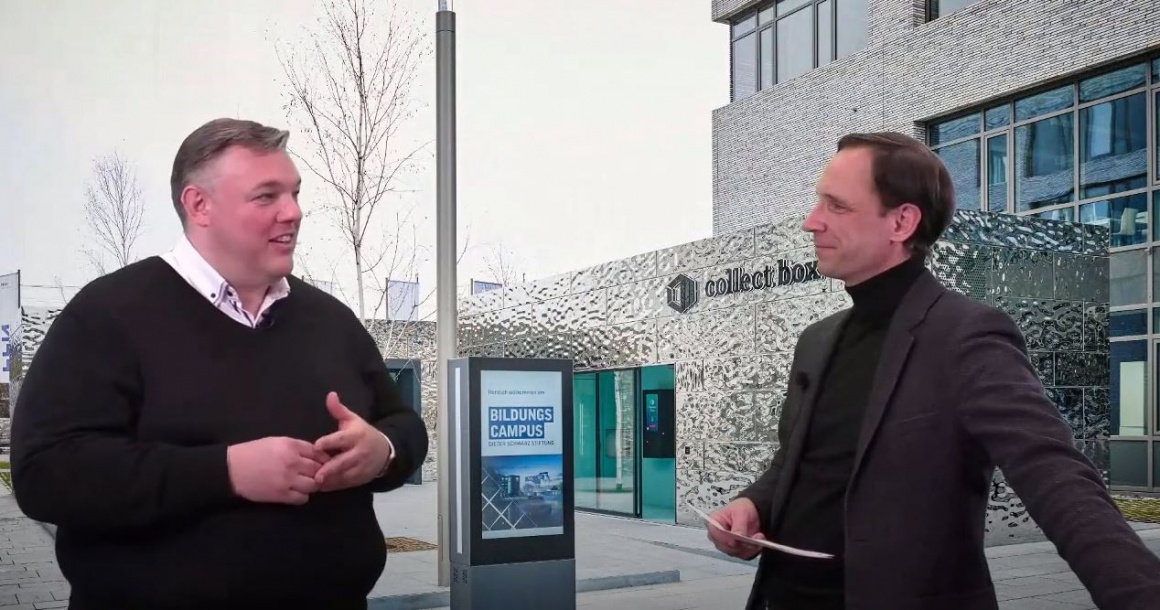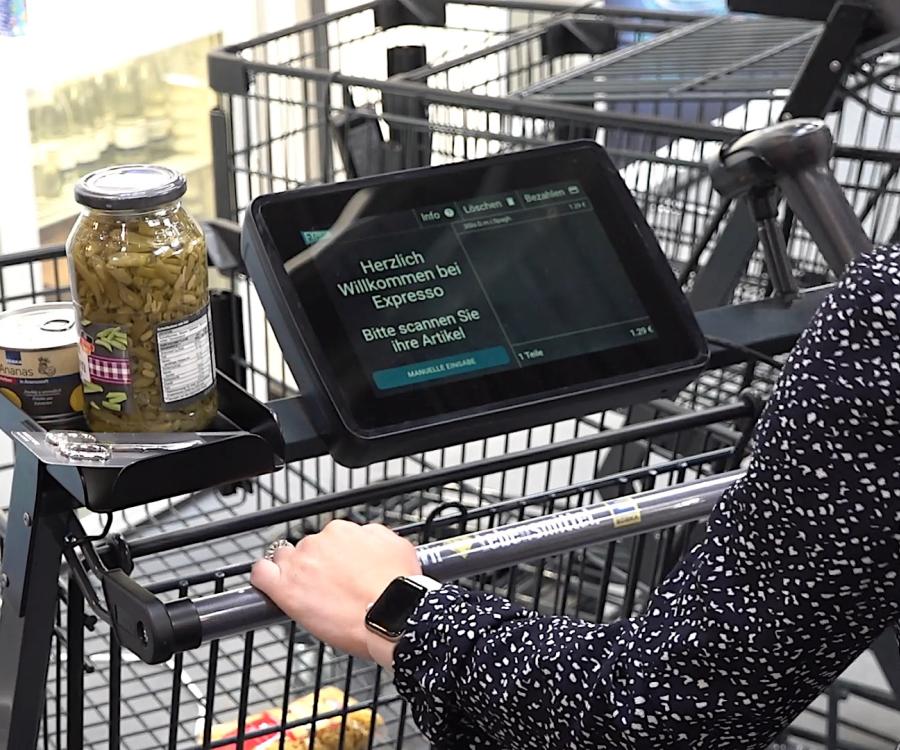Tech is cool! Gimmicks, gadgets, gizmos – they impress and inspire quickly. However, it often takes much longer than technology experts and developers initially predict before the technologies actually arrive in everyday life and are used by users across the board. Why is that, and when will such a new technology be integrated into the retail sector, for example?
Prof. Dr. Oliver Janz from the Baden-Wuerttemberg Cooperative State University (Duale Hochschule Baden-Württemberg) in Heilbronn (DHBW) asked Rolf Schumann, Chief Digital Officer of the Schwarz Group, about this as part of the virtual "Retail Innovation Days" on March 15. We summarize the insights from this talk.

Which technologies will shape retail tomorrow?
Prof. Janz began by asking which technologies will have a decisive impact on retail in the coming years. Rolf Schumann explained that these are not necessarily the visible and attention-grabbing gadgets, but rather what happens in the background. All the technologies that help to optimize processes, make more accurate forecasts and make planning more reliable – in short, to make better decisions – these are the tools that will sustainably advance retail and become established, says Schumann.
This would not only result in greater efficiency for the retailer itself, but also better convenience for customers, and that would ultimately be decisive for competitive advantages. Big data analytics and forecast models based on AI are crucial, says Schumann: "Why are we successful? Because we offer the best product at the best price. And now you have to make it more convenient and cost-effective for customers to get that promise."
In addition, he said, increasing automation is key so that every step in the process doesn't have to be done by hand, for example in disposition, logistics or marketing. This way, the retailer still makes the big decisions, but has better and more up-to-date information at his disposal.
What hurdle does a new technology have to clear before it really arrives in retail?
As can be seen from some examples (self-scanning, mobile payment, virtual reality), technological development alone is not a sufficient feature to introduce new technologies to the mass market. Just because the technology works, customers do not immediately use it in large numbers in their everyday lives. For Schumann, the decisive criterion by which new technologies should be judged is: "Can I use it to influence users' behavior?" And only if that behavioral change occurs, he says, will the relevant tools really be adopted by users.
Schumann cited smart devices (smartphones and smartwatches) as an example of this. Shopping, paying and collecting loyalty points with these devices has theoretically been working for a very long time. Early adopters and technology enthusiasts like to test such functions early on, but for the rest of the population, there has to be a lot of added value for them to adopt them and change their ancestral behavior in favor of something new. Now that smart devices are really anchored in the masses as a means of meeting everyday needs, everything works smoothly and they really enhance the shopping experience, they will also be increasingly used for these purposes.

Has the Corona pandemic brought about a change in behavior here?
The restrictions imposed by the Corona pandemic have brought some topics very much to the fore. The special event at the Retail Innovation Days on March 15 focused on unmanned smart stores, which have been mushrooming for the past year – even in Europe and Germany. Whereas previously there were only very isolated use cases, the reports are now virtually overflowing.
Rolf Schumann also believes that now could be the time for topics such as self-scanning, self-checkout and automated shopping. After all, the pandemic has triggered a truly profound and comprehensive change in behavior. As examples from the world of work, he cites the possibilities of working from home, as well as virtual meetings and collaboration, which many would not have thought possible in the past. But a significant user change has also occurred in retail, he says: "Many hurdles have fallen once again for e-commerce."
The crucial question now, Schumann said, is "What are people missing about the post-Corona shopping experience?" That has to be examined and then completely reevaluated, he said. The decisive factor will always be the pleasant, smooth and self-evident shopping experience. Technologies are only a means to an end. He also sees a lot of potential here for voice commerce, personalization and augmented reality.
How does a retailer find out which technologies are popular?
Technologies are only successful if they bring about or go hand in hand with a genuine change in behavior, Schumann concluded. But, Prof. Janz rightly asked, how do you find out how customers will accept innovations? That can only be done through pilot tests in markets, Rolf Schumann answered. "When surveyed, everyone wants everything. With surveys, you can only determine an initial trend." But whether customers then actually use new technologies, he says, is something that testing and close observation can provide the only reliable answer to. "If you then realize it's just a gimmick, but no real change in behavior occurs, pack the technology away again." And in doing so, he said it's especially important to test the technologies on the entire target audience, not just early adopters.










